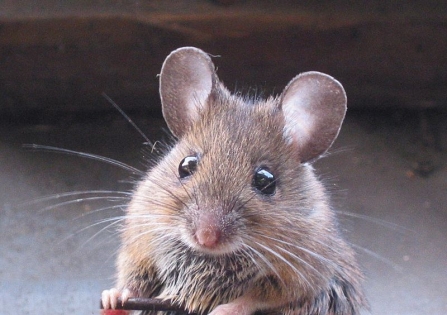
Credit: Apodemus sylvaticus bosmuis, Rasbak
The wood mouse, also known as long tailed field mouse (Apodemus sylvaticus) can be distinguished from voles by their large ears and eyes and long tail, and from the house mouse by their slightly larger size and colouring, wood mice are a more yellow brown with a yellower patch between their forelegs and grey underneath.
These cute creatures are omnivores and feast on seeds, buds and insects, including caterpillars, snails and beetles. Unfortunately, when their lunch had been affected by pesticides, the mice can be poisoned too.
Mainly nocturnal, they are agile jumpers, climbers and swimmers and use this skill to forage for food at night, helped by their great eyesight. Their territory is small, around 0.2ha, though when exploring they will move unique leaves and twigs to leave as landmarks to find their way home. They usually excavate their own burrows and nest underground however they will also create nests wherever they can find comfort and warmth. During winter they exert less energy, preferring to lie in a torpor, like badgers, rather than true hibernation.

